Cyclists who have been riding for some time have all asked the question: “How Do I Choose the Right Bike Handlebars?”
If that’s you, then the information you need to answer that question is right here in this guide.
With so many bike handlebar types available, we cover the range and guide you on selection.
Quick Links
1. Drop Bars
2. Flat Bars
3. Riser Bars
4. Bullhorn Bars
5. Cruiser Bars
6. Butterfly (Touring) Bars
7. BMX Bars
8. Moustache Bars
9. Aero Bars
10. Carbon Fiber Handlebars—All the Issues
ROAD BIKES vs MOUNTAIN BIKES
We have not divided our information along the lines of Road vs MTB in the article, since each category spans different types.
Flat bars and riser bars can be used on road bikes, fixed gear, and MTB alike.
WHICH BIKE HANDLEBARS ARE BEST?
If you are talking about which brand is best, then it’s as much about the magic that some brands do for you compared to others—that’s all about personal preference.
As to which handlebars are objectively the best, that depends both on
- what riding you intend to do and
- what brand catches your attention over and above the others.
In making a judgement on which handlebars are the best, it helps to know where bike brands actually source their components, since hardly any brand manufactures its own kit.

Chances are you have not heard of Blktec, a brand started up around 10 years ago.
Blktek designs high-tech, innovative carbon fiber components, such as the state-of-the-art aero handlebars above.
But they don’t make them. A company located in the Dajia Industrial Park in Taiwan, Trigon, a specialist high-end carbon fiber manufacturer makes Blktec’s components.
That goes for almost every brand out there. Well, those who don’t make them in Taiwan (high-end manufacturing), make them in China.
Blktec are clear about the source of their components, realizing that MIT (Made in Taiwan) is a badge of quality and exclusivity.
Most brands don’t make their source clear, though, and even carefully guard it (mainly by not mentioning the source).
FSA—a brand you’ll no doubt know—have their main manufacturing facility in Taichung, Taiwan (we’ll look into their designs under the section on carbon handlebars below). FSA displayed some advanced designs in the 2019 edition of the Taichung Bike Week show.
We’ll be covering this year’s upcoming Taichung Bike Week in detail. Bookmark the Page so you’ll know when the update is published.
We’ll give details of those designs below. Let’s now have look at the main handlebar types where looks are certainly important; but function is everything.
1. DROP BARS (or, Why do Road Bikes Have Curved Handlebars?)
We could also have mentioned road bike bars because of those oh-so-recognizable ‘hooks’ (as the uninitiated refer to them) that have been, until recently only used on road bikes.
Since the resurgence of cyclocross around a decade ago (the discipline first appeared in the 1900s), and the late 2010s explosion of interest in gravel bikes, drop bars are common on muddy circuits and countless dilapidated by-ways.

Reverse drop bars are also an option.
Decades ago, road bikes were your only choice of bike. If your bike did not have some sort of flat or riser bar, and was fitted with drop bars, which most were, you could improve comfort by loosening the stem bolt, then swinging the drop bars through 180°.
Modern biking style sense has seen a return of reverse dropbars—fixies for example (as in the image above)
The cyclist comfortably adopts an appropriately stylish upright posture whilst cruising around the city.
For a cyclist looking to get one up in the fashion stakes, reverse drops will turn heads and get tongues wagging. More info on the very interesting Reddit thread on the subject.
The simple reason for drop bars curving forward and down is for the racing ergonomic effect.
A rider in the ’tuck’ position, has a reduced profile to the wind. The position also enables greater leverage against the pedals compared with an upright position, particularly when combined with a raised seat (leg thigh and calf at 90° at the top of a pedal stroke).
Drop bars are also the default for track bikes for the same reason.
Must-Know Technicals
If you’re looking to upgrade your current drop handlebars, you’ll have a good idea of what ‘feel’ (or experience if you like) you seek. In this case, numbers may not matter too much.
Still, communicating with your bike professional in the following terms will ensure your new bars will deliver the experience you want.
Measurements are in millimeters, and should be read in relation to the handlebar’s tubing center-points—you’ll see how that works shortly.
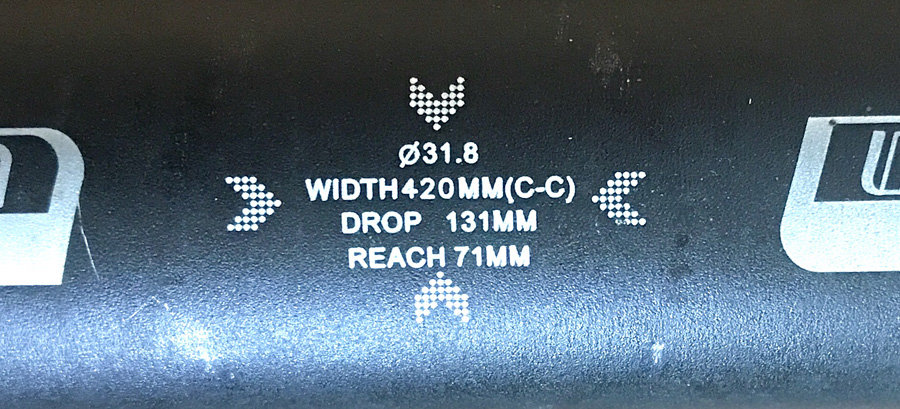
Many handlebars provide detailed spec at the point where the stem faceplate clamps onto the bar. Let’s go through each of these in turn.
Width
We understand width in two senses:
- the measurement right across the handlebars from left to right at the bar-ends center-point.
- the handlebar tubing diameter.
Handlebar widths for road bikes range from to 360mm to 460mm. 420mm is the most common, but what you opt for depends on your personal comfort factor.
The drop bar from the image measures 420mm. (C-C) means center-to-center clarifying that you measure width from the center of one bar end to the other.
Shoulder width is the key variable. The wider your shoulders, the wider your handlebars so both naturally align when you’re ‘in the drops’.
A rider of smaller stature will prefer narrower handlebars due to (probably) wider shoulders; a larger rider the opposite. A standard handlebar fitting defaults to shoulder width.
You’ll also find a wider bar may affect your center-of-mass differently compared with a narrower bar. Riders tend to experience narrow bars as more ‘twitchy’, although handling is also highly determined by a bike’s mechanical trail relative to head tube angle.
The other handlebar width to note is handlebar tubing diameter.
On road bikes, 31.8mm is standard, at the stem faceplate clamp section at any rate. The remaining sections taper down which reduces weight as well as allowing for a slimmed down look.
31.8mm is the standard across most handlebar types nowadays. It allows for a beefier tube and thus greater strength. Nothing is more dangerous than a snapped handlebar—you’ve almost zero chance of recovery and will certainly go down.
Carbon handlebars come in a wide variety of shapes, designed for greater aerodynamics and ergonomics. We cover them below.
Drop
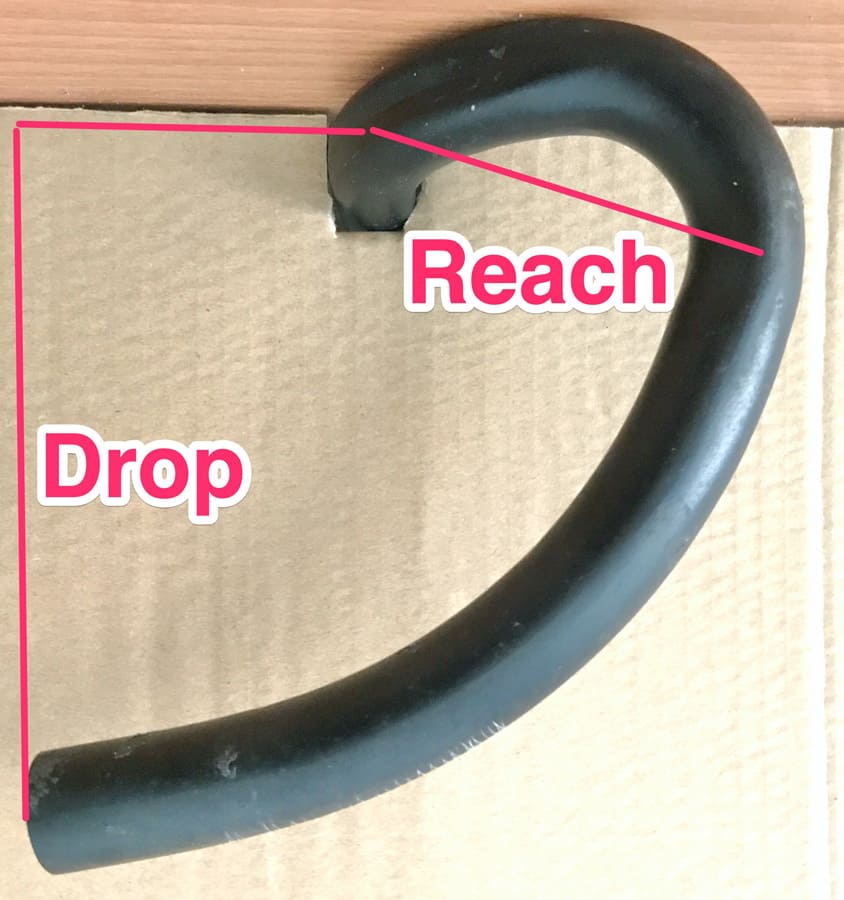
Here’s the battle-scarred pair of alloy drop bars from which the spec image above is taken
The drop is 131mm measured from the handlebar center-point directly square to the stem. That is just at the point where the bars enter the curve forward and down; from here you measure to the bar end center-point.
Reach
We measure reach from the theoretical center of the handlebar tube at the stem, forward and down to the apex of the drop handlebar’s curve.
The apex of each handlebar model’s curve varies. On many, the curve is right at the top, quite sharp, and almost level with the stem, as in our example.
This allows a rider to snug their hand into the tight angle that sweeps down to the bar end; a parabolic curve all the way to the bar end.
If you like maximum forward extension with shallow drops, then this may be the design for you.
A downward angle rolling into a gentle curve exiting into horizontal extensions back towards the rider is a deeper
How Wide Should my Drop Bars Be? (Are wider handlebars better?)
A rule of thumb is your bars should be the width of your shoulders. If you are just starting out in road cycling, your bike shop professional’s recommendation will be based on this.
However, once you get into cycling, you may find you prefer a wider or narrower bar. Better to err on the side of too wide, than too narrow though; wider gives you more control.
Track Bike Drop Bars
The traditional track bike drop bar was a variation on standard drop bars.
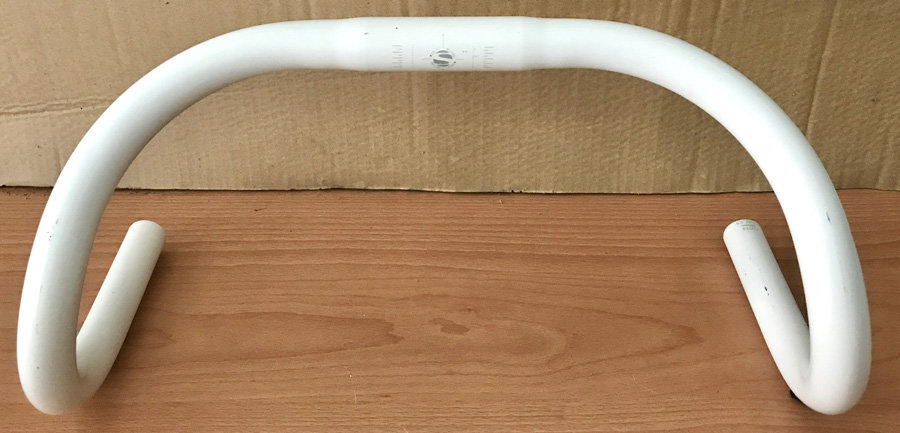
The bar diameter for this one is 26mm; 24.8mm is also common for the traditional type.
You’ll note the curve begins much earlier compared to conventional road bike drop bars.
Since road biking involves longer distances incorporating climbing and descending as well as long stretches on the flat, bars extend on-the-level away from the stem for a greater distance, allowing cyclists to rest their hands, as an alternative to the drops.
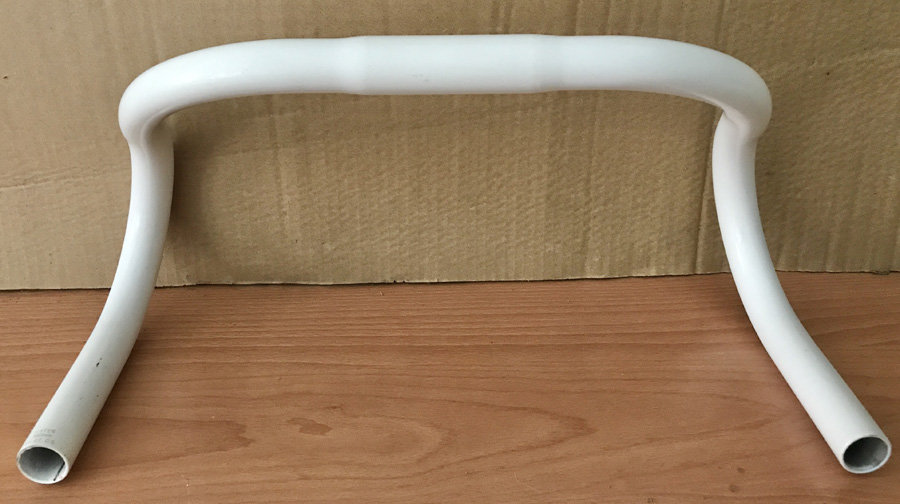
The cyclist’s view: limited extension from the stem, flared for ergonomic comfort.
You’ll still find these bars on some road bikes. There are no hard rules here. If any handlebar type provides comfort, or just suits your style of riding, then use them.
Recent iterations of this type of handlebar have branched out, many looking a lot more like aero bars in recent years.
Randonneur Drop Bars
These drop bars are designed for comfort over long distances. They can be used on touring bikes and tandem bikes, as well as standard road bikes.
The drop design has rolling curves and angles making the drops comfortable or resting on the bar. Long drops make them more accessible. Ergonomic for long days of touring, not for racing.
A set of randonneur bars looks a lot like the track bike bars above.
The difference is randonneur bars extend further out either side of the stem providing plenty of room for the touring cyclist to move their hands around
FLAT BARS

Flat bars are the main handlebar type on mountain bikes, fixed gear bikes and ‘around town’ road bikes.
These type of road bikes are typically alloy frames with perhaps a carbon stem and forks, with a flat bar substituting for drop bars.
A flat bar’s width provides the extra stability necessary for high performance mountain biking, downhill or cross country over rough trails for instance.
The combination of a dropper post and flat (or riser bars: next section) allows for nuanced bike handling at high speeds.
On road bikes you steer by shifting your weight in conjunction with imperceptible counter-steering (the key to steering your bike btw). The advantages of wide bars are completely negated in these riding circumstances.
Widths vary between 580mm for standard mountain bikes, and up to 800mm for downhill (cut it to get the correct fit). The degree of backsweep of each bar is variable—it’s possible to dial the fit to your comfort zone.
Fixie flat bars, on the other hand, are a good deal narrower, and the criterion for selection is the same as for drop bars. Shoulder width will give most cyclists adequate comfort.
The bar in the image above whilst flat, curves back towards the cyclist which provides a better experience than a straight bar (as opposed to flat).
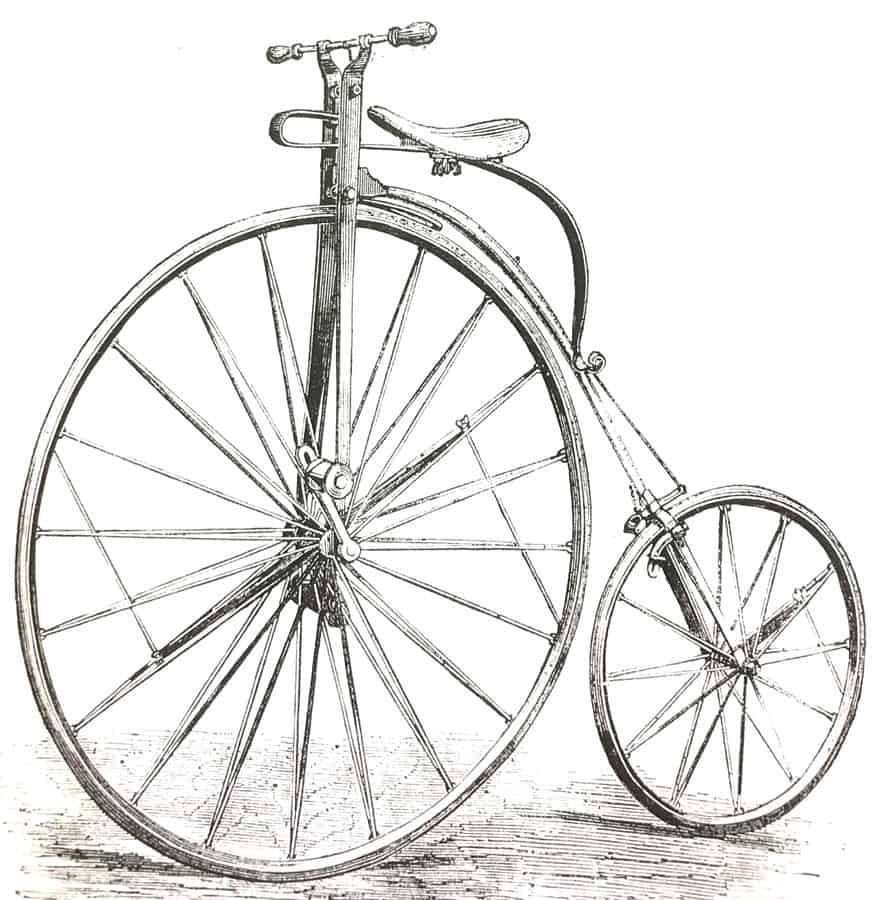
Flat bars—truly flat—were the original handlebar type with the appearance of the first Penny Farthings—the bridge between the velocipede and the safety bike—in the 1860s.
RISER HANDLEBARS

Riser handlebars are common on fixed gear and mountain bikes.
The advantage for fixies is facilitating a rider’s upright position, which is all you want in the urban environment. Fixies are nippy and maneuverable; a riser bar adds to the comfort factor.
For mountain bikes various degrees of rise are available enabling you to dial the fit close to perfection.
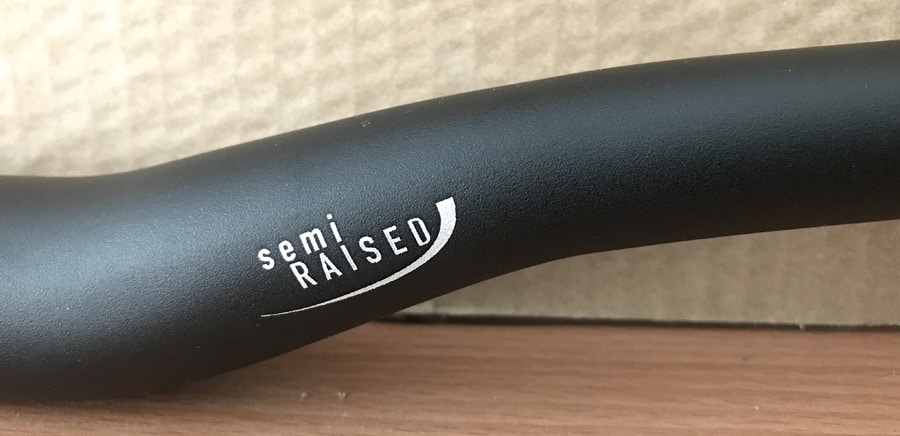
This particular set is simply “semi” raised. Bars with 20, 30, 40mm or more of rise are available.
The riser bar can also be turned 180° to provide extra leverage for mountain bike riders who find that works for them.
BULLHORN BARS
Kids on bikes with old style cruiser bars, maybe one they shared with a parent, rotated the bars through 180° to achieve a much more aggressive “bull bar” look, back in the day.
Bullhorn bars are the right choice for that sort of look, of course. And they’re an alternative to flat or riser bars on fixies.
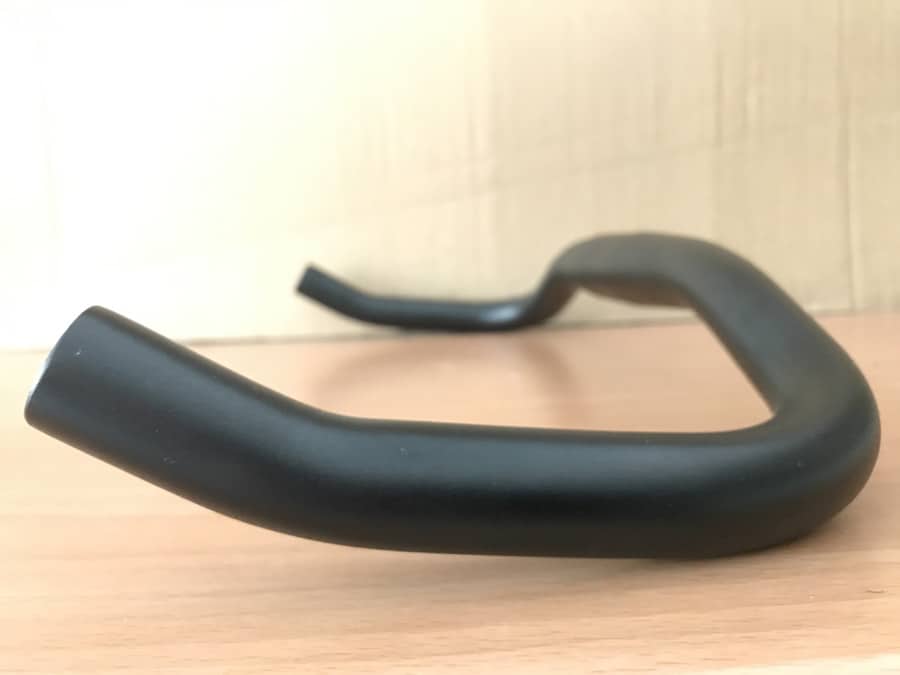
This model is for riders preferring a more dynamic, forward-leaning position.
The hand-grip section dips down several degrees below the stem, kicking up at the end preventing a rider’s hands from easily slipping off—almost as bad as handlebar breakage in terms of catastrophic consequences.
Some riders prefer to ride with the bullhorn in the reverse position. Not rotated through 180°, although you could certainly do that, but flipped over so that left becomes right, right becomes left, similar to the reverse drop bar look, without being so pronounced.
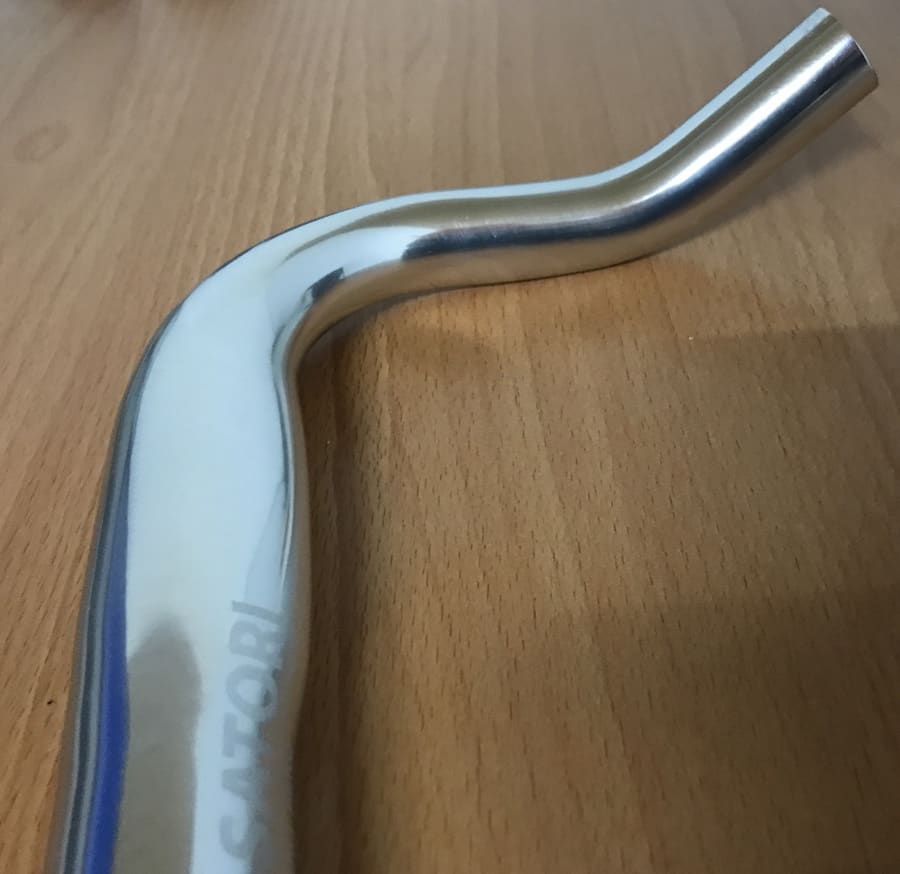
This model is by Satori (Hsin Long), one of the biggest, if not the biggest OE and ODM handlebar maker in the world.
It runs straight out from the stem and around to the hand-grip section to the kick-up at the end. No downward curvature at all. Flat all the way.
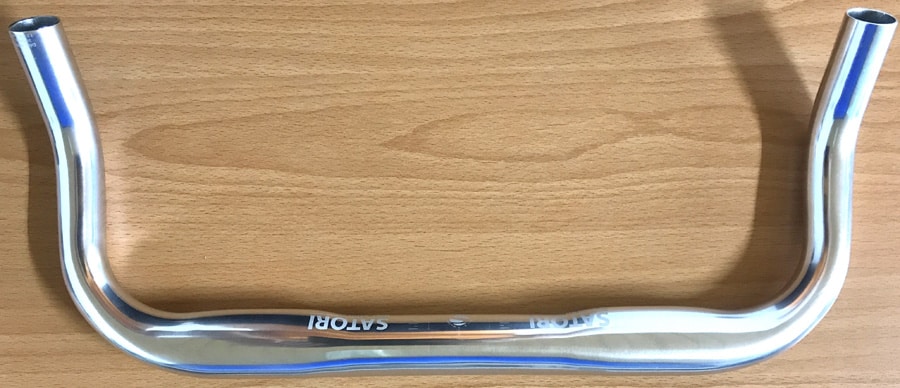
The tube flattens on top to the right and left of the stem providing an extra comfy surface for resting hands.

Grooves directly beneath provide a resting place, and extra grip for your fingers.
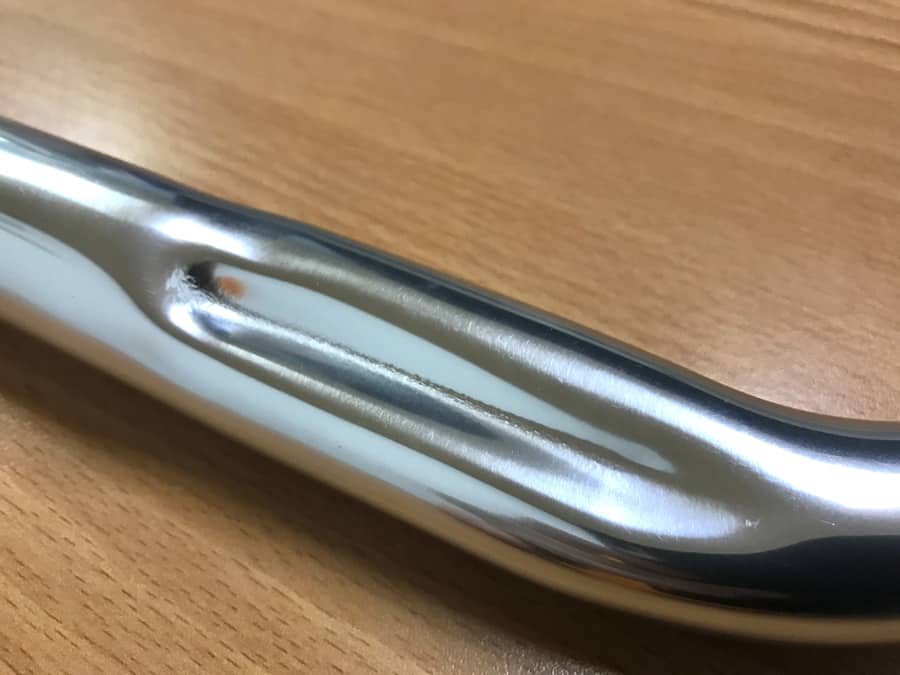
Sweaty hands may slip on the polished alloy, so that’s a useful touch.
CRUISER BARS
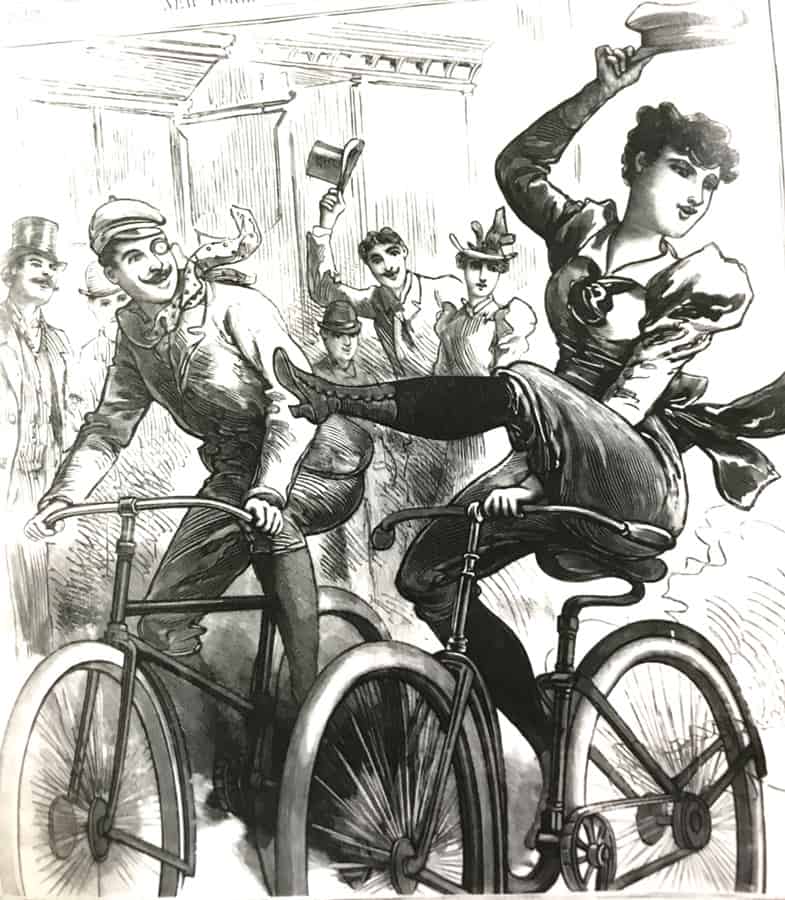
Handlebars used on the early safety bikes (c.1890s) quickly evolved into the cruiser bike handlebar types that we are familiar with today.
For comfort, safety, and ease of use in an upright position, nothing beats cruiser bars. Well, it’s the whole cruiser-bike experience—a comfortable and stylish way to get from A to B.
BUTTERFLY BARS (Touring/Trekking)
The closest thing to a steering wheel on a bike, butterfly bars give you complete control over a trekking bike that may be loaded with a lot of gear.
The comfort factor is high, especially with foam grips laid up all around. But they are heavy and slow to respond—well, if you are not used to them.
The weight factor is an issue, although given the overall weight of a touring bike, it is right at home.
The electrification of this sector puts trekking bikes on a growth curve. Butterfly bars on a eTrekking bike are perfect. Weight is really no longer an issue.
MOUSTACHE BARS

This style of handlebar is not particularly elegant, but certainly practical.
You could certainly substitute it for a set of Butterfly bars. There’s plenty of surface area to re-position your hands without sacrificing stability.
However, Mike has some advice on the subject.
BMX HANDLEBARS
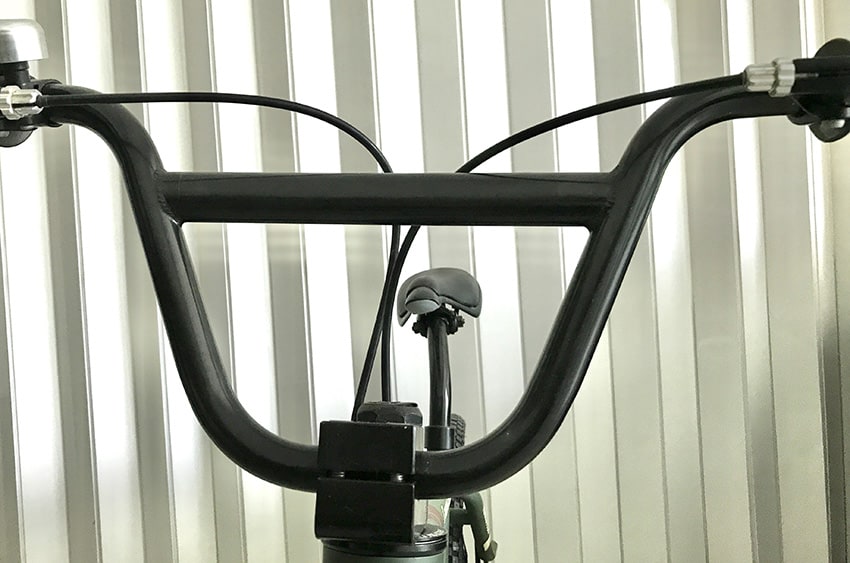
Ape-style bars braced for action.
BMX street riding is 99% out-of-the-saddle, so you need a reliable crankset and chain to support your weight and withstand the extreme levels of torque that result from out-of-the-saddle riding.
The handlebars take almost an equal amount of punishment—it’s a crank and handlebars show. The handlebar must be able to withstand the forces. Pedaling hard and pulling back, then a jump exerting multiple impact forces on the landing…
Your choices are chromoly, aluminum, or carbon fiber.
Carbon fiber is suspect after any impacts. A seemingly undamaged handlebar may well have internal cracks which can fail without warning.
Since taking a spill is routine in BMX street or racing, you are better off with aluminum or chromoly.
Aluminum is light and strong. Lighter than chromoly. But chromoly’s strength to weight ratio is higher—lighter than steel but stronger, although, more brittle.
AERO or TT (Time Trial) BARS
We left this one until last since probably the best aero bars are all carbon nowadays; and carbon is the subject of the next section.
Hydroforming aluminum gives flexibility in creating shapes, but is limited nonetheless.
Because carbon is laid up like paper mache around a mold, typically a bladder, almost any design is possible. Advanced engineering utilizing wind tunnel trials produces increasingly efficient aerobars.
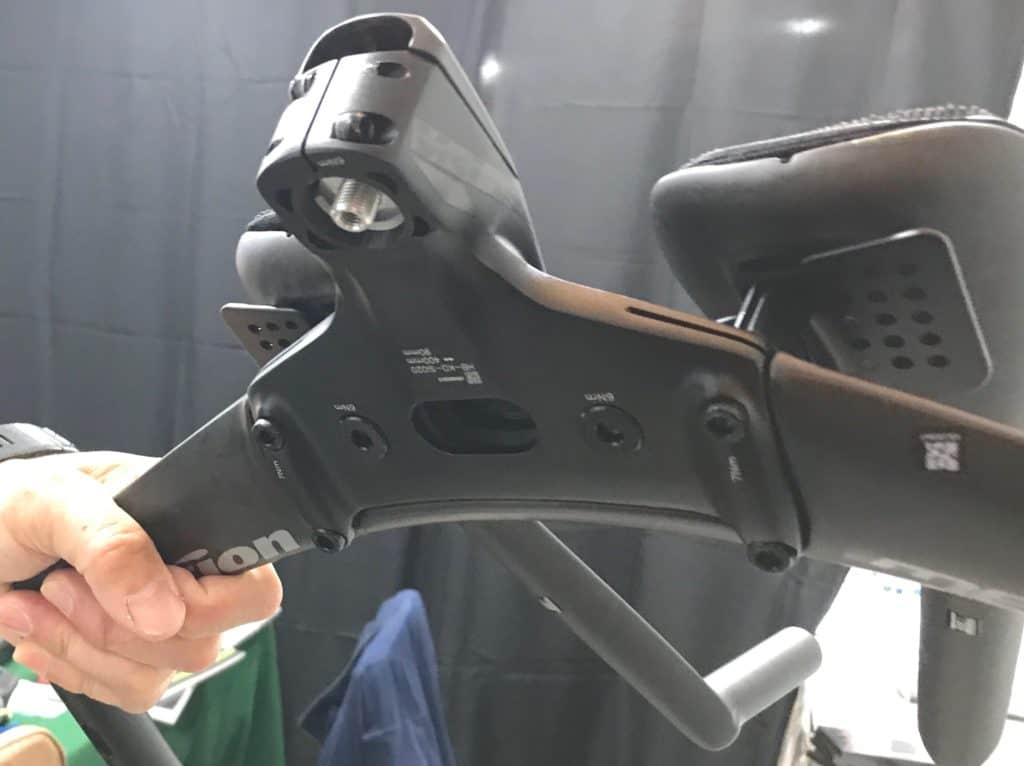
Visiontech displayed their “vision” of the future at Taichung Bike Week with this eye-watering carbon handlebar and stem integration.
Now, further to the subject of carbon…
CARBON FIBER HANDLEBARS
In this section, we firstly cover the recent trend in carbon fiber bars. Then address FAQs on several important issues concerning carbon bars.
Integrated Cable Routing
Integrated cable routing on modern bikes—mainly high end road bikes—relocates brake and derailleur cables inside the frame and components, giving a tidy and streamlined look.
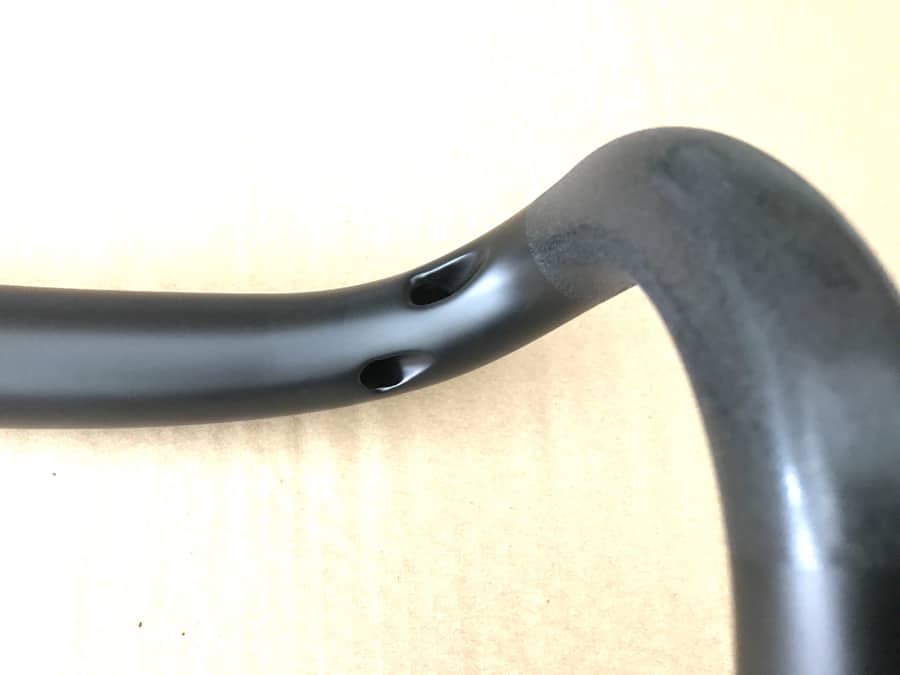
Cable routing begins at the handlebars.

Derailleur and brake cables exit the back of the shifter through the openings, straight into the carbon handlebar, via the cable housings, then along to the center.

The cable housings exit the bar, then into a stem with exit portals.
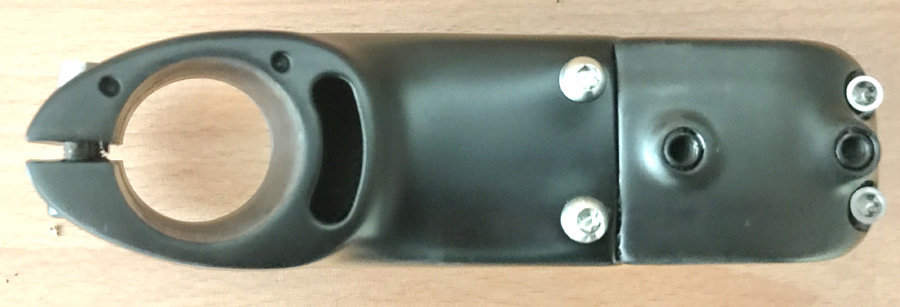
The stem fits to a headset specifically designed to channel the cable housings through to the head tube, then the down tube.
Are Carbon Fiber Bars More Comfortable?
Aluminum gives a harsher ride since there is less flex and less absorption of road vibrations.
Even the stiffest carbon frame or component (with the exception of stems and cranks perhaps) flexes under stress.
Are Carbon Fiber Handlebars Safe?
Carbon is lighter, but sometimes only marginally, depending on the quality of the carbon fibers (are they Toray?) and the layup.
Carbon bars were originally constructed from a base of thin aluminum over which 3K carbon weave was wrapped—super-strong and reliable.
If you are riding with 100% carbon handlebars, and have a crash which directly impacts the bars, you can only be sure there are no internal cracks by having the bars X-rayed.
When Should You Replace Carbon Handlebars?
When you crash, and if your handlebars take an impact, they are suspect, as per the previous section.
Are Carbon Bars Worth it?
If you have the budget for them, probably. You have to remember that the marginal reduction in weight between a carbon handlebar and a similar alloy model is small, and won’t make a difference to most cyclists.
If you are willing to pay for that reduction, then by all means… Or if you are professional or intent on turning professional, then again, yes.
Otherwise alloy bars will be fine. You have no need for concern after a crash; they’ll perhaps be dented or scratched. But you won’t have to worry about a potential sudden failure.
THE UPSHOT
Bike handlebar types have increased in diversity in the 150 odd years since the bicycle first appeared on French streets.
Cyclists are looking for comfort or performance in this proliferation of options—and comfort plus performance for the pros…but maximizing performance is usually at the expense of comfort. Or, put another way, if you’re comfortable, you may well not be maximizing performance.
So, what did we miss out in the above? Let us know!
